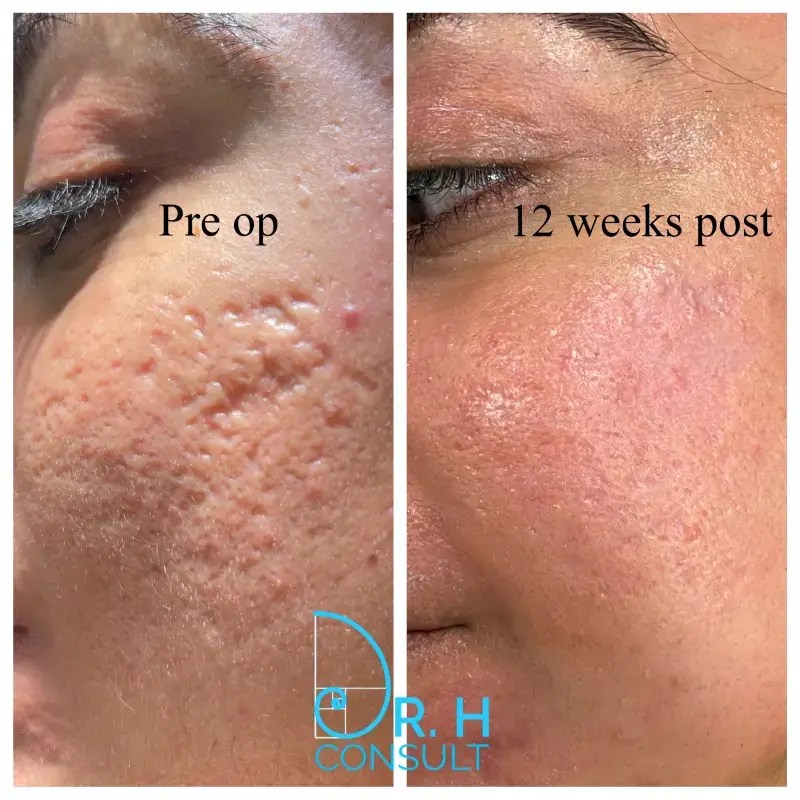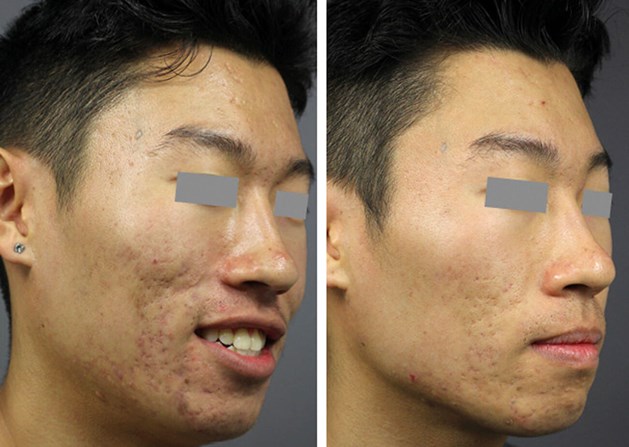Checking Out Skin Disease: Dealing With and identifying Acne Scars for Healthier Skin
Acne scars stand for a significant problem for individuals seeking to keep healthy and balanced skin, as they can impact both look and self-esteem. Recognizing the various types of marks, from atrophic to hypertrophic, is crucial for figuring out proper treatment alternatives.
Recognizing Acne Scars

The body's natural recovery process can cause either atrophic marks, which show up as depressions in the skin, or hypertrophic marks, which are raised and arise from overflow of collagen. Furthermore, the mental toll of acne scars must not be undervalued; many people report feelings of shame, anxiousness, and reduced self-esteem. This psychological worry can affect social communications and overall quality of life.
Resolving acne marks calls for a comprehensive understanding of their formation and influence. Awareness of the potential for lasting repercussions connected with unattended scars can inspire people to look for suitable treatments. Early intervention and reliable monitoring approaches can dramatically boost skin look and enhance mental strength, highlighting the importance of recognizing the complexities surrounding acne marks.
Sorts Of Acne Marks
Acne scars can be classified right into distinctive kinds, each displaying unique characteristics and needing certain therapy techniques. acne treatment for sensitive skin. The primary kinds of acne scars include atrophic, hypertrophic, and keloid marks

Hypertrophic scars, in contrast, are raised above the skin level and are the result of too much collagen manufacturing during the healing procedure. They commonly continue to be within the boundaries of the original acne sore. Keloid scars are similar however extend beyond the original injury site, forming larger, elevated areas that can be itchy or excruciating.
Comprehending these kinds of marks is essential for choosing appropriate treatment choices. Various marks may respond better to particular therapies, such as laser therapies, fillers, or surgical interventions, stressing the importance of a tailored method to acne mark administration.
Identifying Your Scars
When reviewing the look of your skin, it is critical to accurately identify the kind of scars present, as this will certainly inform one of the most reliable treatment method. Acne scars normally come under 2 categories: hypertrophic and atrophic marks. Atrophic marks, which are the most typical, look like anxieties or imprints on the skin. These can additionally be classified right into ice-pick scars, boxcar scars, and rolling marks, each displaying distinct attributes and needing different strategies for assessment.
Hypertrophic marks, on the other hand, are increased and happen as a result of excessive collagen manufacturing during the healing procedure. Recognizing the details attributes of your scars-- such as structure, depth, and you could check here size-- is necessary for correct recognition (acne scars treatment). Furthermore, think about the circulation of marks throughout your skin, as this can indicate the severity and duration of the acne problem
Involving with a dermatologist can offer valuable insights right into the nature of your scars, helping in the distinction in between various kinds. A detailed understanding of your marks will ultimately cause a more customized and effective therapy strategy, guaranteeing a more clear and healthier skin tone.
Therapy Alternatives Offered
Determining the details kind of acne marks existing on your skin lays the foundation for exploring reliable treatment alternatives. Common kinds of acne marks include atrophic (clinically depressed), hypertrophic (increased), and post-inflammatory erythema.
For atrophic scars, options such as chemical peels, microneedling, and laser resurfacing are widely made use of. Chemical peels off utilize acids to eliminate the external layer of skin, advertising brand-new cell development. Microneedling involves little needles that create micro-injuries, stimulating collagen production. Laser resurfacing targets damaged skin cells, enhancing texture and tone.
Hypertrophic scars can be treated with corticosteroid shots to flatten the mark or laser treatment to lower inflammation and enhance appearance. Silicone gel sheets and pressure dressings may also help in taking care of raised marks.
In enhancement, dermal fillers can temporarily complete clinical depressions from atrophic marks, while medical excision may be appropriate for severe instances. Each therapy choice has its benefits and factors to consider, making it necessary to speak with a dermatologist. They can offer tailored suggestions based on the kind and intensity of your marks, in addition to your skin type and overall health and wellness.
Tips for Avoidance
Efficient avoidance methods can substantially decrease the likelihood of developing acne scars. The very first step is to preserve a consistent skin care regimen that includes gentle cleaning, exfoliation, and hydrating. Using non-comedogenic products helps prevent stopped up pores, which can exacerbate acne. Furthermore, integrating topical treatments including salicylic acid or benzoyl peroxide can properly manage outbreaks and minimize swelling.
Staying clear of the desire to stand out or pick acne sores see this page is crucial, as this can lead see post to deeper skin damage and increase the danger of scarring. Rather, take into consideration making use of a chilly compress or over the counter treatments to lower swelling and inflammation.
Sunlight defense is one more crucial aspect of avoidance; ultraviolet (UV) rays can dim scars and hinder the healing process. Using a broad-spectrum sun block with at least SPF 30 daily can shield the skin and advertise also recovery.
Lastly, keeping a well balanced diet regimen rich in vitamins, minerals, and antioxidants supports skin health and wellness and recovery. Remaining hydrated and managing stress and anxiety degrees can likewise play a substantial duty in reducing acne flare-ups. By executing these techniques, individuals can substantially reduce their opportunities of developing acne marks.
Final Thought
In conclusion, understanding and identifying acne marks is important for effective therapy and achieving healthier skin. Different sorts of acne scars, including hypertrophic and atrophic marks, require particular treatments tailored to specific demands. Therapy alternatives range from chemical peels and microneedling to corticosteroid injections, highlighting the significance of getting in touch with a skin specialist. Additionally, adopting a mild skincare regimen and protecting the skin from UV exposure can considerably add to the avoidance of additional scarring and general skin health.
The body's natural healing procedure can result in either atrophic scars, which show up as depressions in the skin, or hypertrophic scars, which are elevated and result from overflow of collagen. They are more split into 3 subtypes: ice choice scars, boxcar scars, and rolling scars. Acne marks usually drop into two groups: atrophic and hypertrophic marks. These can even more be classified into ice-pick marks, boxcar marks, and rolling scars, each showing unique qualities and requiring different strategies for assessment.
Different types of acne marks, consisting of hypertrophic and atrophic marks, require specific interventions tailored to individual needs.